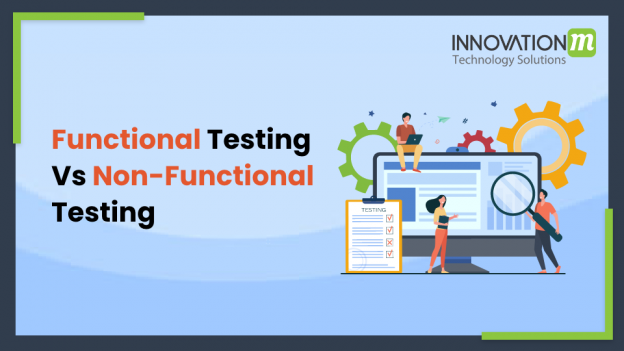We all know how important the process of testing is and how it affects the delivery of software. But for performing good software testing it should be balanced from all the aspects like the requirement of the client, how to load applications can handle etc. The output we are providing to the client should not only be functionally good but should also be perfect from non-functional aspects.
In this blog, we will talk about 2 major types of testing FUNCTIONAL & NON-FUNCTIONAL
Functional Testing
The main goal of functional testing is to test “How our software should work ?” . It means the functions of the features of the software that are present in it. It is the client who gives the functional requirements to the company, in which he explains the software/application he requires should work in this way.
Types of functional testing
- Unit testing
- Smoke Testing
- Sanity Testing
- Integration Testing
- White-box testing
- Black Box testing
- User Acceptance testing
- Regression testing
- Unit Testing: Unit testing is the smallest testable part of an application called units and is tested independently It is basically done at the developer’s end. The whole application is divided into various modules and then these modules are tested based on the test cases.
- Smoke Testing: Smoke testing, is usually a type of acceptance testing that provides an initial check that a new software build and its critical functionality are stable. If the smoke tests pass, we can proceed with further testing. It is, also called build verification testing, which often checks whether new or critical functionality meets its objective. If the tests don’t pass, additional dev work is required.
- Sanity Testing: A type of quick regression testing, in which we test the impacted functionality caused by any other module on that module. So it is generally the quick look to make sure that the impacted functionalities are working as expected.
- Integration Testing: This is the process of software testing individual units are combined and tested as a group, its purpose is to find bugs in the interaction between integrated units.
- White Box Testing: When the software’s internal infrastructure, code, and design are visible to the developer or tester, that refers to white-box testing. This approach involves different types of functional testing, such as unit, integration, and system testing. The organization tests numerous aspects of the software, such as predefined inputs and expected outputs, as well as decision branches, loops, and statements in the code, using a white-box testing approach.
- Black-box Testing: Black-box testing, in contrast to white-box testing, involves testing against a system in which the internal code, paths, and infrastructure are not visible. As a result, testers employ this technique to validate expected outputs against specific inputs. Any instance in which a QA professional does not examine the code prior to testing is considered a black box. Using black-box testing, the organization can test the software in the same way that a customer would. Depending on the test’s objective, black-box testing can include a variety of non-functional and functional testing types.
- Acceptance Testing: The purpose of acceptance testing is purely to ensure that the end-user can achieve the goals set in the business requirements. Rather than focus on the functionality of specific features, acceptance testing involves reviewing the feature-complete application flow and end-to-end experience. User acceptance testing (UAT) and beta testing, subsets of acceptance testing, involve end-users to conduct their analysis of the finished product. From there, the organization can evaluate that feedback and make changes.
- Regression Testing: Regression testing is testing the unchanged feature of the software to make sure that changes like adding a feature, deleting a feature, or modification or fixing a defect are not impacting the unchanged feature of the software.
Non Functional Testing
It mainly focuses on the non-functional aspects like performance, usability, etc, we do non-functional testing because of the customer expectation. Functional requirements are given by the clients but we should also do the non-functional testing to provide a quality product to the client. Wo do non-functional testing is done later after the functional testing is completed. The main aim is to check the performance of the software.
Types of Non-functional testing
- Performance Testing
- Volume Testing
- Scalability
- Usability Testing
- Load Testing
- Stress Testing
- Performance Testing: In this, we test the performance of the software, we test the ability and response time of an application by applying load is called performance testing.
- Volume Testing: It is a type of testing where the application i9s subjected to huge amounts of data or a large number of users at a time. It is also known as Flood Testing.
- Scalability Testing: This testing helps to find how the application responds to the increased loads in terms of users of data.
- Usability Testing: In usability testing, we test the user-friendliness of the software. As we know that we are not only the person who will use this application, it will be used by a large number of customers. So we have to test whether the application or software is user-friendly or not.
- Load Testing: This testing is used to check the performance of the software by applying loads like less than or equal to desired load or peak load. It only focuses on the number of users.
- Stress Testing: The goal of Stress testing is measuring software on its robustness and error handling capabilities under extremely heavy load conditions and ensuring that software doesn’t crash under crunch situations.
 End to End Technology Solutions
End to End Technology Solutions
